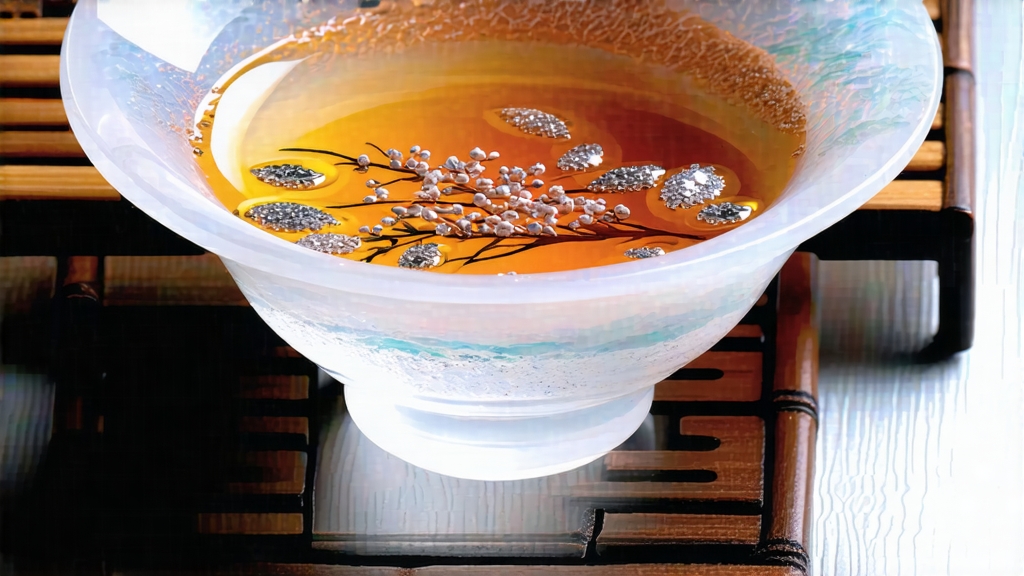
Bai Hao Yin Zhen—“Silver Needle” in the West, “White Hair Silver Tip” in its homeland—occupies the highest rung of the white-tea ladder. To the uninitiated it looks almost too delicate to be tea: straight, silvery spears that catch light like polished pewter, exhaling a perfume somewhere between fresh wheat, dried hay, and the faint sweetness of baby apricots. One sip, however, reveals why Song-dynasty poets praised it as “moonlight solidified,” and why modern cupping panels rank it among the world’s most subtle yet enduringly aromatic teas.
Origins wrapped in mist and legend
The documented history of Bai Hao Yin Zhen begins in the 1790s, when tea merchants in Fuding County, northern Fujian, started selecting only the unopened leaf buds of the local Da Bai cultivar, withering them without any twisting or firing, and exporting the result down the Min River to the port of Fuzhou. British and Dutch traders carried it to Europe, where Victorian society christened it “Silver Needle” and paid more for a pound than for many workers’ weekly wages. Yet oral tradition pushes the story further back: villagers claim that during the Song era imperial tea commissioners already set aside the first spring buds for tribute, packing them in silk and racing them north on horseback so the emperor could taste the “first breath of Fujian spring.” Whatever the precise date, the tea’s birthplace remains the same—Fuding and, slightly later, Zhenghe, two counties whose red-granite mountains, morning fog, and cool nights create a natural withering chamber unrivalled anywhere on earth.
Micro-terroir and the two “zhen”
Today connoisseurs distinguish two authentic appellations: Fuding Yin Zhen and Zhenghe Yin Zhen. Fuding’s buds are plumper, their down more pearlescent; the liquor tends toward pale champagne with a crisp, bamboo-like freshness. Zhenghe sits at a slightly higher altitude; its buds are slimmer, the leaf chemistry richer in polyphenols, yielding a deeper golden cup and a rounder, orchid-like sweetness. Both styles share the same picking standard—only the single unopened bud, no leaf, no stem—yet they speak different dialects of the same quiet language.
Harvest: the silent race against dawn
Picking begins when the spring thermometer hovers between 15 °C and 20 °C, usually from mid-March to early April. Experienced pluckers work before the sun climbs high enough to raise the leaf temperature; they snap the bud with the fingernail, never twisting, to avoid bruising. A full kilogram of finished Silver Needle requires roughly 30 000 buds, all gathered within a two-week window. The work is so labor-intensive that a skilled picker manages barely a kilo of fresh buds per day, which shrink to two hundred grams after drying.
Craft: doing almost nothing, at the right moment
White tea’s minimalism is deceptive. Once picked, the buds are spread on bamboo trays exactly two centimeters thick and left to wither for thirty-six to forty-eight hours. During this time moisture drops from 75 % to below 10 %, but the real magic is enzymatic: mild oxidation softens grassy notes and coaxes out honeyed, creamy compounds. In Fuding many producers still rely on sun-withering in the morning, moving the trays into shaded corridors for the afternoon, then finishing with a gentle 40 °C bake for twenty minutes—just enough to fix the aroma without caramelizing sugars. Zhenghe makers prefer longer indoor withering at slightly higher humidity, followed by charcoal baking in sagging reed baskets. Both methods demand constant vigilance; one unexpected shower or an overly hot oven can flatten the tea’s signature “needle” shape and dull its fragrance.
Grading and aging: silver that turns to gold
Unlike green tea, Silver Needle improves with age. The same buds that taste like mountain spring water when six months old will, after five years in porous paper, develop notes of dried longan, sandalwood, and even a hint of camphor. Aged Yin Zhen is pressed into 100 g cakes or stored loose in clay jars; collectors prize vintages from exceptionally cold springs, believing that slow bud growth concentrates the compounds needed for graceful maturation. The current national standard lists three grades—Special, First, and Second